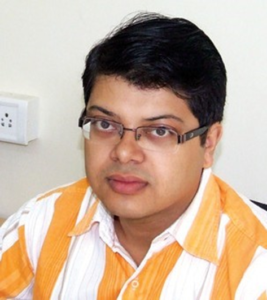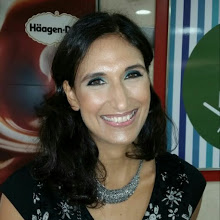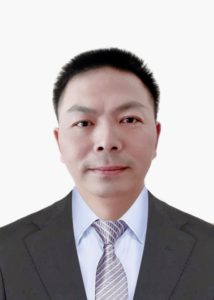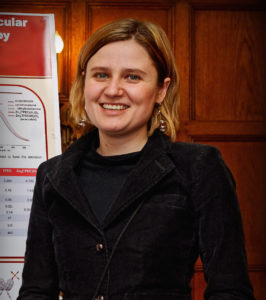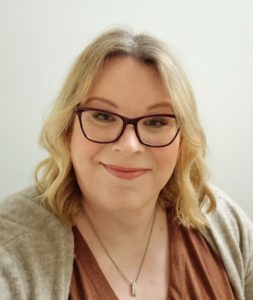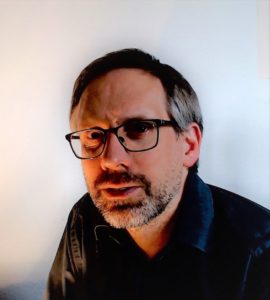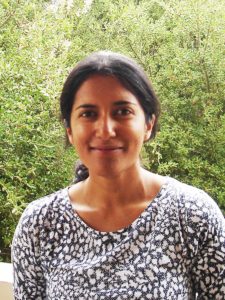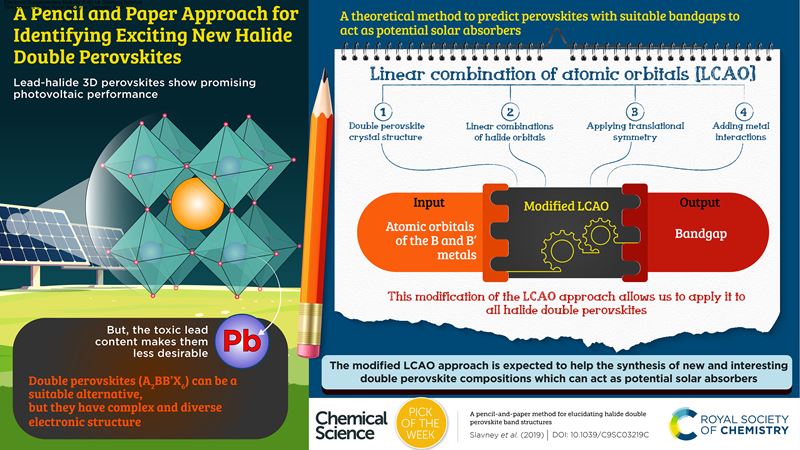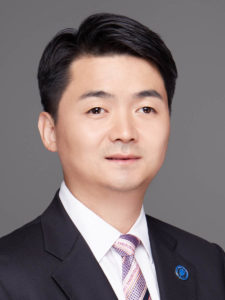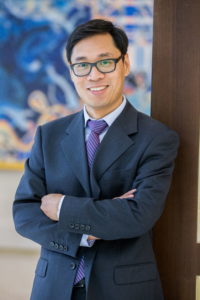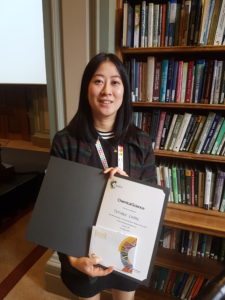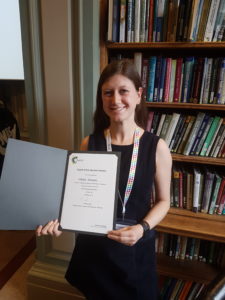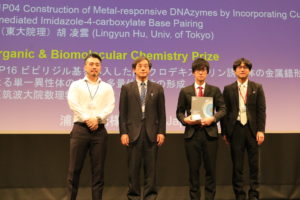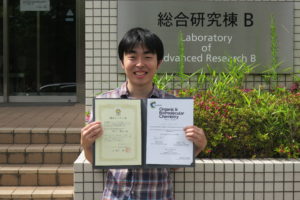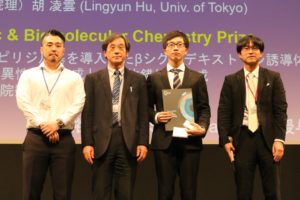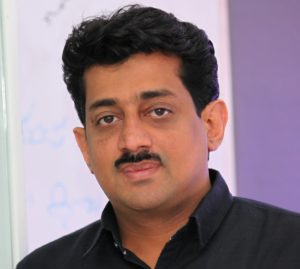
Professor Subi George joined the Chemical Science Editorial Board in 2020. To celebrate this occasion, we met virtually with Subi to discuss his research highlights and what attracted him to join the Chemical Science team.
Subi’s research focuses on the synthesis of small molecules and the study of molecular self-assembly processes. His group use supramolecular approaches to develop bioinspired and adaptive materials, including dynamic supramolecular polymers and optoelectronic materials.
What would you say is your biggest motivation?
I would say my interactions with passionate and creative young researchers. This interaction motivates and encourages me. I am also highly motivated when we are able to come up with new discoveries and are able to publish our exciting findings in high impact journals. As scientists, we are lucky – we never stop learning, and we have the academic freedom of trying new things every day. This provides new opportunities to bring about change and explore solutions to a whole range of problems. These are my biggest motivations to push forward with my research.
What has been the most challenging moment of your career so far?
I would say that I have two moments, one in my earlier career and one later. The point when I decided to pursue chemistry as a career was quite a challenging moment. In India, this kind of decision previously attracted a lot of criticism, because it was believed that there were no job opportunities if you decided to pursue science as a career. Medicine and engineering were always seen as being more promising careers. It was therefore difficult at times to convince my family that a career in chemistry was a good decision. Luckily, I did have support from my close family, so that was a real blessing.
Secondly, I feel that it can be quite challenging when you develop your own independent group. It can be quite difficult to establish and differentiate yourself, and to ensure that you create a strong, internationally recognised group.
In your area of research, what do you feel has been the most revolutionary piece of work within the past 5 years?
The particular class of materials that we have been working on are based on supramolecular polymers, which are dynamic systems. This field has been active over the past two decades, from which we have gained a high level of mechanistic understanding. Over the past five years, significant progress has been made and elegant design strategies have been developed, which have allowed a high level of structural control. We have also witnessed a push in the limit of self-assembly from equilibrium to being out of equilibrium, towards the preparation of biomimetic, adaptive materials. We have been working in this particular field. We recognised that synergy between structural and temporal control would be the most suitable way to prepare biomimetic materials, so we came up with a strategy called bioinspired temporal supramolecular polymerisation. Overall, the past 5 years have therefore seen an increase in our understanding of these systems, and in tools and strategies to assist in the preparation of optimised biomimetic supramolecular polymers.
It’s been over a year since the outbreak of the global pandemic. What changes have you witnessed in the local researcher community? Do you think there are any new challenges or opportunities for chemistry researchers from this ongoing pandemic?
The pandemic has hit every sector, and the scientific community has not been spared. We were required to switch to working online for group meetings and teaching, which was quite difficult. The pandemic has also resulted in a lack of exposure for students, who haven’t been able to attend things such as international conferences, and for those in their final years who were hoping to seek research opportunities abroad. Again, this is such an important experience, so it has definitely been challenging for the community and made it even more important to keep up the motivation of my students.
Looking to the brighter side of things, the pandemic has forced us to slow down and take a step back. We have had the time to consult the literature and to carefully plan what we would like to achieve in the future. The pandemic has therefore definitely provided opportunities.
This is also an important time where the public is looking to the scientific community with a lot of expectations. Many researchers in India have worked to contribute towards COVID-related research to combat the disease, including breakthroughs in diagnostic tools, vaccines, or even the development of PPE equipment. It has given us the chance to think about our responsibilities and what our commitment is to society.
Which of your Chemical Science publications are you most proud of and why?
I would have to say that I love them all. We always ensure that we publish unique and high-quality research. However, if I had to pick one piece, it would be a contribution from 2017. This demonstrated chemically-fuelled temporal switching of an amphillic self-assembly system. We introduced the use of redox fuels for the preparation of these materials that are away from equilibrium. This is a concept that people are starting to utilise.
Chemical Science is the flagship journal of the Royal Society of Chemistry. What aspects of the journal do you feel contribute to us being the flagship?
Chemical Science is a place where you can publish high quality, high impact, multidisciplinary chemistry. It is one of the few high impact science journals that is diamond open access, meaning that content in the journal is free to read and free to publish. This is incredibly important for the whole research community, but especially for researchers in India because it is not always possible to pay the high article processing charges that are charged by other high impact journals. This is very unique, and contributes to Chemical Science being the flagship. In India, unlike places in Europe, we don’t have a dedicated budget or grants that can be used for open access publications. This is going to be a big challenge for India as we move towards an open publishing platform. At this time, if a journal is not diamond open access, or does not have significant waiver policies, researchers in India will struggle to publish in journals with high article-processing charges.
Another highlight of Chemical Science is the Edge Article format that researchers can use when publishing their primary research. This was so unique when it was introduced. Communication-style articles can be too restrictive, so the Edge Article format helps researchers to be able to communicate their research in as much or as little detail as is required, and allows for a much smoother reading process than having lots of information that has to be put in the supplementary information section. The Edge Article format allows science to be discussed in depth.
What attracted you to join the Editorial Board for Chemical Science?
I feel that I can help to popularise Chemical Science in India, and help to promote the journal to our authors there. Being an Associate Editor of a high-impact journal like Chemical Science provides the opportunity to learn about lots of different research areas first-hand, and I am able to learn more about the latest developments in science through this role, which is great. I’m very happy to be on the board, and to help to contribute to the growth of the journal to continue to make it one of the most exciting and high impact chemistry journals.
How do you see your field progressing in the next 10 years?
Research on supramolecular polymers shows a lot of promise I feel. Given the previous work in this field, we are in a position to access a higher level of complex structures and address further challenges that are still faced when preparing these systems. I think we’ll start to be able to produce more complex, self-organised systems. I am confident that we will be able to make much-enhanced adaptive and multicomponent biomimetic systems in this area soon.
In celebration of joining the Chemical Science team, Subi has highlighted a selection of important contributions from the past few years, with a focus on recent trends in supramolecular polymers, dissipative systems and organic materials. The collection can be viewed here.
Submit to Chemical Science today! Check out our author guidelines for information on our article types or find out more about the advantages of publishing in a Royal Society of Chemistry journal.
Keep up to date with our latest articles, reviews, collections & more by following us on Twitter. You can also keep informed by signing up to our E-Alerts.


